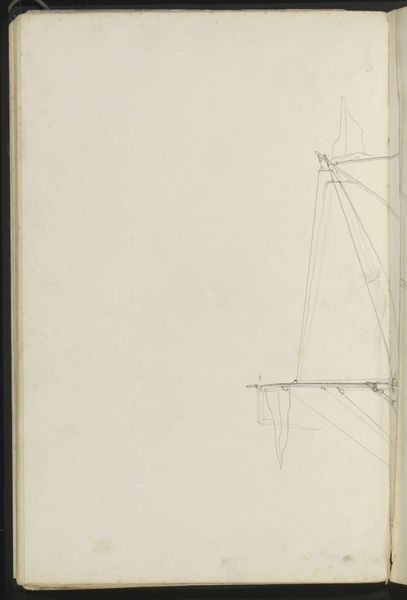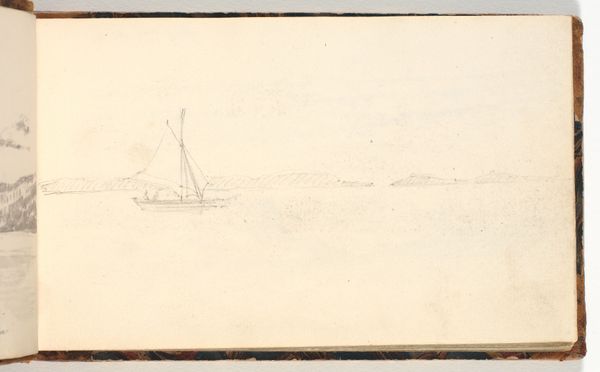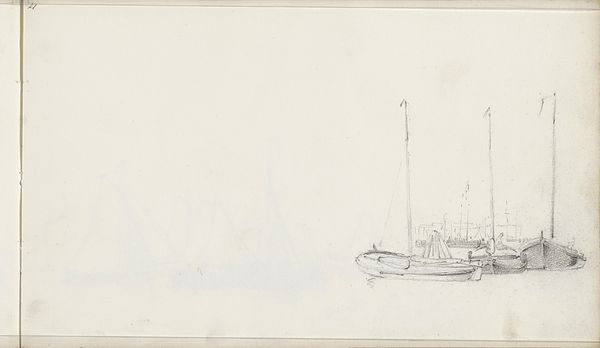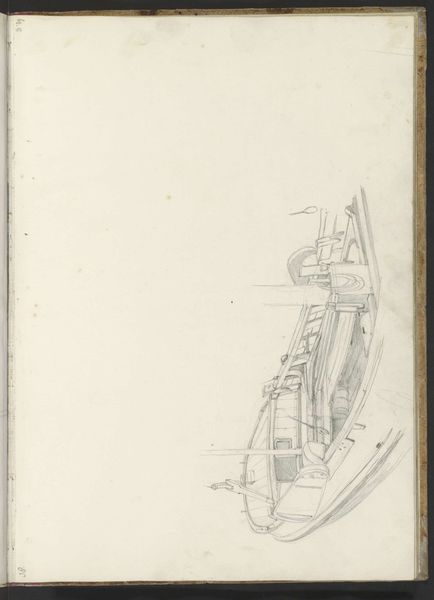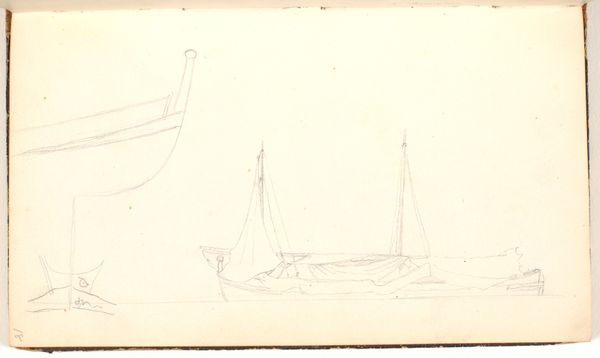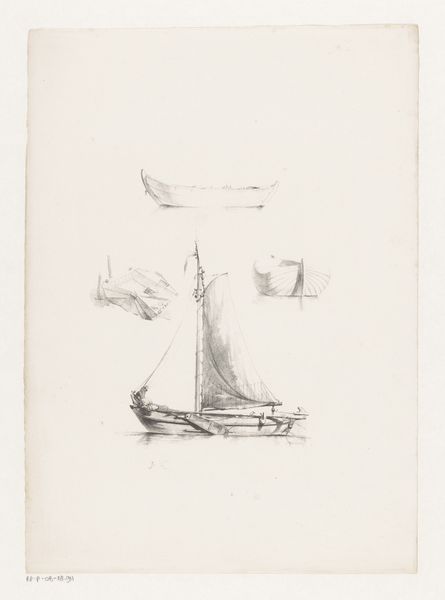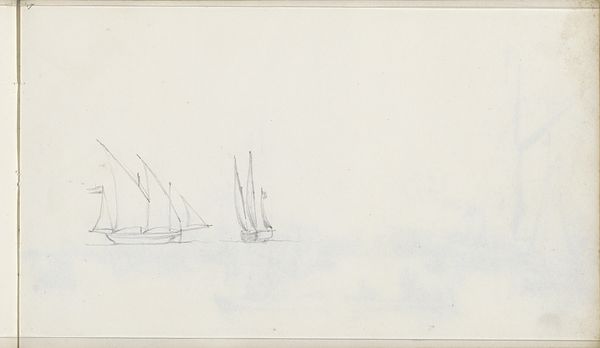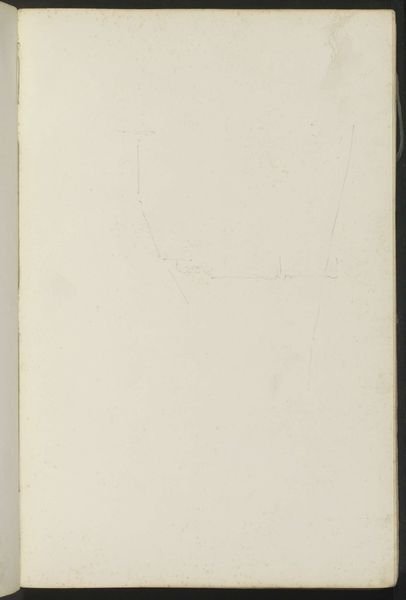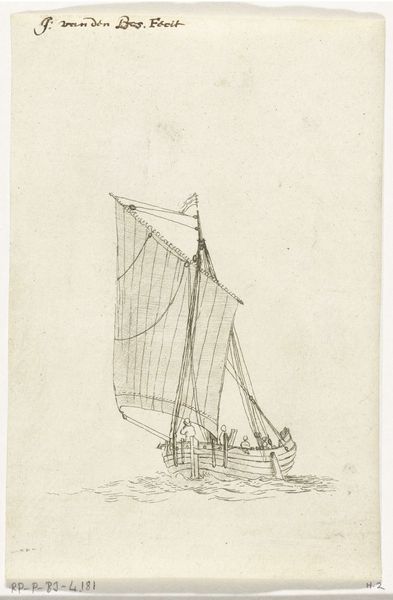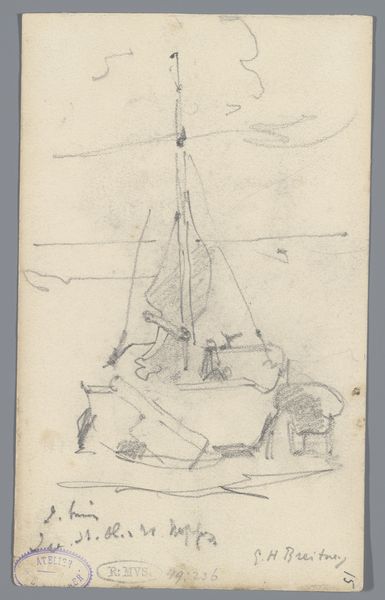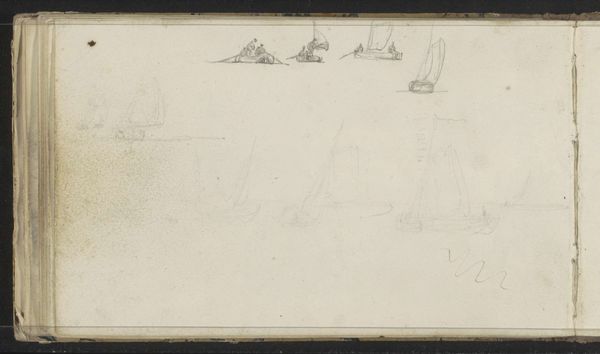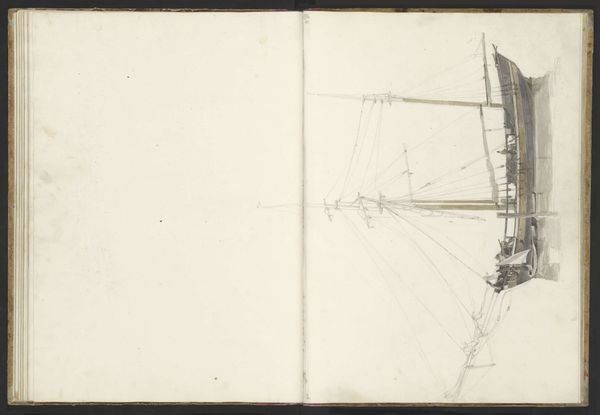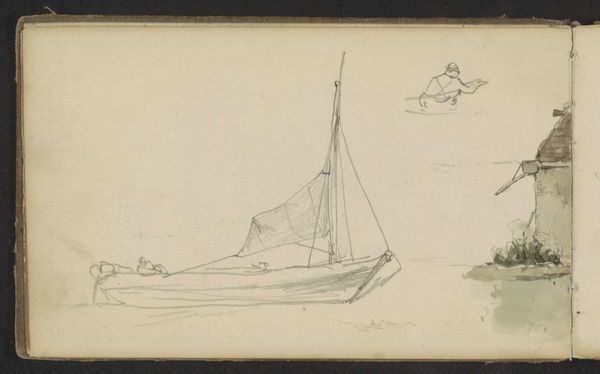
drawing, paper, graphite
#
drawing
#
landscape
#
paper
#
graphite
Copyright: Rijks Museum: Open Domain
Curator: Here we have a small but evocative drawing called "Zeilboot", which translates to "Sailboat," made sometime between 1797 and 1838 by Johannes Christiaan Schotel. It's a graphite sketch on paper, currently held at the Rijksmuseum. Editor: Immediately, I feel a sense of loneliness. The vast expanse of blank paper surrounding this tiny boat... It gives a real feeling of isolation and the insignificance of the human endeavor against the backdrop of the ocean. Curator: Interesting. Schotel was known for his maritime scenes, capturing not just the aesthetics of the sea, but also its economic and social impact. These weren’t just pretty pictures; they were documents of the Dutch seafaring tradition. Editor: Well, if we examine it from the lens of archetypes, water often symbolizes the unconscious. And ships represent the conscious self navigating these turbulent waters. Could it speak to something more about the journey of the soul? Or perhaps a commentary on Dutch colonial endeavors and its complex identity on the global stage? Curator: I see it more literally. For a country so dependent on naval power, a single sailboat could symbolize trade routes and international connections, albeit fraught with risk, considering how delicate that craft appears in his hands. It certainly offers a narrative about power, privilege, and even the vulnerabilities inherent in those positions. Editor: That fragility is certainly present. But observe the subtle upward tilt of the bow – a symbol of hope and resilience, pointing towards a potentially brighter future. It may also invoke classic themes of man versus nature, the fragile wooden craft challenging the might of the unpredictable seas. Curator: Or is it nature empowering man through the wind in the sails? Regardless, placing this artwork within its historical context allows us to question traditional narratives, asking whose stories get told, and whose are obscured. It also urges us to recognize the role sailing played in colonialism and global exchange, whether that sailing ship becomes a symbol of wealth or subjugation. Editor: I find myself appreciating that the lack of detail makes the drawing timeless, open to continuous re-interpretation. The sparseness invites introspection, letting each viewer project their own narratives of journey and transformation. Curator: Ultimately, viewing art such as this requires both looking closely at the details and zooming out to explore a wider canvas of social and cultural meanings. Editor: A fitting end, emphasizing the dual navigation of external reality and personal reflection evoked by this little sailboat on a vast ocean of possibilities.
Comments
No comments
Be the first to comment and join the conversation on the ultimate creative platform.
